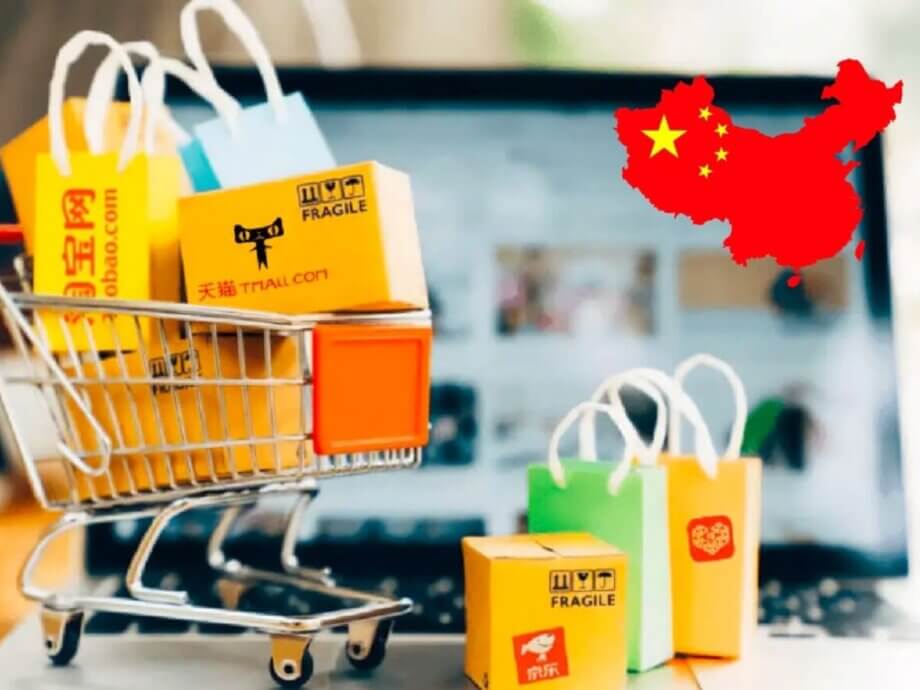China’s E-Commerce Festivals: From National Carnivals to Quiet Benchmarks
For over a decade, China’s biannual e-commerce festivals—most notably the mid-year “618” and the November “Double 11” (Singles’ Day)—were synonymous with frenzied shopping, midnight sales, and record-breaking figures. These events, once marked by nationwide anticipation and a carnival-like atmosphere, have become subdued, even as sales volumes remain impressive. The transformation of these festivals is not a sign of decline, but rather a reflection of profound shifts in Chinese consumer behavior, technology, and market maturity.
- China’s E-Commerce Festivals: From National Carnivals to Quiet Benchmarks
- How Did China’s E-Commerce Festivals Become Global Phenomena?
- What’s Driving the Shift in Chinese Consumer Habits?
- Gen Z: The Cautious, Connected, and Value-Oriented Shopper
- From Hype to Habit: The Maturation of Chinese E-Shopping
- Lower-Tier Cities and Rural Markets: The New Frontier
- The Impact of the Pandemic: Lasting Changes in Shopping Behavior
- Luxury, Experience, and the New Chinese Consumer
- What Does the Future Hold for E-Shopping in China?
- In Summary
In 2024, the 618 festival, now the longest in history at 39 days, generated nearly 2 trillion yuan (about $278.66 billion) in online retail sales—a 9.8% year-on-year increase, according to Fudan University’s Consumer Big Data Laboratory. Yet, the excitement that once surrounded these events has faded. Many consumers were unaware of the festival’s arrival or departure, and the days of families gathering to fill shopping carts at midnight are largely gone. The spectacle of concerts, celebrity livestreams, and viral marketing stunts has given way to a quieter, more rational shopping experience.
This evolution is emblematic of broader changes in China’s consumer landscape, driven by technology, shifting values, and the maturation of both shoppers and the e-commerce industry itself.
How Did China’s E-Commerce Festivals Become Global Phenomena?
The origins of China’s mega-sales events trace back to 2008, when JD.com launched a major promotion for its 10th anniversary. The following year, Taobao Mall (now Tmall) created Singles’ Day on November 11, aiming to establish a Chinese equivalent of Black Friday. These events quickly grew into industry-wide promotional nodes, with other platforms joining in and international consumers participating in the shopping frenzy.
Over 17 years, the scale of these festivals exploded. For example, Double 11 sales on Tmall and Taobao soared from 936 million yuan in 2010 to 19.1 billion yuan in 2012, making it the world’s largest shopping day. By 2024, the 618 festival’s sales were more than 200 times greater than the first Double 11. These events not only disrupted traditional retail but also turned China into a global e-commerce powerhouse, attracting shoppers from over 200 countries and regions.
However, data from Baidu Index shows that public interest in these festivals began declining around 2019, with search volumes for Double 11 falling back to 2013 levels. The question now is not whether these festivals are still relevant, but how their changing character reflects deeper shifts in Chinese consumer culture.
What’s Driving the Shift in Chinese Consumer Habits?
Several interlocking trends are reshaping how Chinese consumers shop online:
- Digital Maturity and Omnichannel Shopping: With nearly one billion online consumers, China boasts the world’s highest e-commerce adoption rate. The rise of digital payment platforms like Alipay and WeChat Pay has made cashless transactions the norm, both online and offline. More than 85% of Chinese shoppers now prefer omnichannel retail, blending online browsing with in-store pickup or delivery (Statista).
- Livestreaming and Social Commerce: The integration of livestreaming into e-commerce, pioneered by platforms like Taobao Live and Douyin (TikTok in China), has transformed shopping into an interactive, entertainment-driven experience. In 2023, livestreaming e-commerce generated nearly $682.5 billion in sales, accounting for almost a third of China’s online shopping gross merchandise value (Forbes).
- Rational, Value-Driven Consumption: Chinese consumers, especially younger generations, are increasingly prioritizing quality, practicality, and value over brand prestige or impulse buying. Slogans like “lowest price online” have lost their allure, replaced by a focus on the quality-to-price ratio and simplified discount rules.
- Personalization and Cultural Relevance: There is a growing demand for products and brands that resonate with Chinese cultural values and personal identity. Domestic brands have gained significant ground, and foreign brands must now localize their offerings to remain competitive (McKinsey).
- Expansion into Lower-Tier Cities and Rural Markets: As urban markets mature, e-commerce platforms are targeting growth in lower-tier cities and rural areas, where young consumers are optimistic and incomes are rising faster than in major cities.
Livestreaming: The New Pulse of Chinese E-Commerce
One of the most transformative trends in recent years has been the rise of livestreaming e-commerce. This model blends live video, real-time interaction, and instant purchasing, creating a highly engaging shopping experience. Influencers and key opinion leaders (KOLs) host livestreams, demonstrate products, answer questions, and offer exclusive deals, often driving massive sales in a matter of minutes.
According to McKinsey, conversion rates for live commerce can approach 30%, up to ten times higher than conventional e-commerce. Apparel, beauty, food, and electronics are among the most popular categories. Gen Z and millennials dominate the audience, but middle-aged and senior consumers are increasingly participating.
Platforms like Douyin, Kuaishou, and Taobao Live have made it seamless for users to transition from watching a livestream to making a purchase with just a few clicks. The “fandom culture” surrounding influencers has further fueled this trend, making live commerce a core component of the Chinese shopping experience.
Gen Z: The Cautious, Connected, and Value-Oriented Shopper
China’s Generation Z—those born between 1997 and 2012—are emerging as a powerful force in shaping the future of e-commerce. Digitally native and highly connected, Gen Z consumers are both tech-savvy and financially prudent. Nearly all use mobile devices for shopping, social media, and daily services, and they rely heavily on online stores, search engines, and peer recommendations for product research (ECDB).
Unlike the stereotype of reckless spenders, Chinese Gen Z are cautious with credit and wary of “buy now, pay later” schemes. They prioritize speed, convenience, and information, often reading customer reviews and seeking express shipping. While they embrace new shopping formats like livestreaming, they also value authenticity and are quick to switch brands if their expectations aren’t met.
Ms. Mi Gao, a 25-year-old graduate student from Zhuhai, exemplifies this shift. She told CNA:
“What I care about most is whether something is suitable for me… The price advantage determines where I make my purchase.”
For Gen Z, practicality and value trump status symbols. They are more likely to buy affordable, versatile items than luxury goods, and they expect brands to cater to their personal needs and identities.
From Hype to Habit: The Maturation of Chinese E-Shopping
The fading excitement around e-commerce festivals is not a sign of stagnation, but of market maturity. In the early years, these events relied on hype, complex discount mechanisms, and impulse buying. Shoppers would spend hours calculating deals, often purchasing unnecessary items to meet spending thresholds. Today, simplified rules—such as direct discounts per item—make shopping more straightforward and less stressful.
More importantly, the focus has shifted from chasing volume through price wars to enhancing the overall shopping experience. Platforms like Xiaohongshu (Little Red Book) blend community and commerce, allowing users to discover and purchase products organically, much like browsing a physical market. The “browse-and-buy” logic is replacing the old “traffic and price” model.
Consumer values have also evolved. Sustainability, health, and responsible consumption are increasingly important. According to Deloitte, 66% of Chinese consumers are willing to pay more for sustainable products, and nearly three-quarters have adopted lifestyles aimed at minimizing greenhouse gas emissions (HROne).
The Rise of Local Brands and Cultural Identity
Another significant trend is the growing preference for domestic brands. The “guochao” movement—literally “national tide”—reflects a desire to buy Chinese goods that connect with local roots and cultural identity. Baidu searches for Chinese brands have nearly doubled over the past decade, and surveys show that 85% of consumers would now choose a local brand over a foreign one in many categories (McKinsey).
This shift is not just about patriotism; it’s also about value, design, and performance. Chinese brands have become more competitive, offering attractive features and better prices. In some sectors, such as electronics and packaged foods, local brands now dominate the market.
Lower-Tier Cities and Rural Markets: The New Frontier
As first- and second-tier cities reach saturation, e-commerce platforms are turning to lower-tier cities and rural areas for growth. These markets are home to a large, increasingly affluent population, with rural incomes growing faster than urban incomes in recent years. Among rural Gen Z, optimism about economic prospects is high, and their confidence is fueling new consumption patterns.
Brands are adapting their strategies to cater to the unique needs and preferences of these consumers. For example, discount platforms like Pinduoduo have gained popularity by offering group-buying deals and affordable essentials. The expansion into these markets is reshaping the competitive landscape and opening new opportunities for both domestic and international brands.
The Impact of the Pandemic: Lasting Changes in Shopping Behavior
The COVID-19 pandemic accelerated many of the trends already underway in China’s consumer market. Lockdowns and social distancing measures pushed more people to shop online, and even as restrictions eased, the habit has persisted. According to UNCTAD, more than half of Chinese consumers now shop online more frequently than before the pandemic, and this shift is expected to be permanent (UNCTAD).
McKinsey’s analysis of point-of-sale data shows that while offline shopping is recovering, discretionary spending and foot traffic in physical stores remain below pre-pandemic levels. Consumers are making more considered purchases, focusing on essentials, health, and value. The pandemic also triggered a decline in brand loyalty, with many shoppers willing to try new stores and products, especially online.
Retailers have responded by ramping up their digital activities, investing in omnichannel strategies, and leveraging data to personalize offers and improve customer engagement. The integration of social media, livestreaming, and e-commerce has become a dominant trend, fostering a new era of impulse buying and brand interaction.
Luxury, Experience, and the New Chinese Consumer
China’s luxury market, once fueled by conspicuous consumption and status-seeking, is undergoing a transformation. Young consumers are now more rational and selective, prioritizing value and experiences over brand prestige. The phenomenon of “luxury shame”—a reluctance to display wealth openly—has led to a shift toward more understated, experience-driven purchases (Consultancy Asia).
Luxury brands are adapting by offering more accessible products, localizing their marketing, and focusing on digital engagement. However, the slowdown in Chinese demand is being felt globally, with some high-end boutiques closing and international brands facing increased competition from local players.
As Jason Yu, managing director of Kantar Worldpanel, explains:
“They are just becoming more rational and selective with their purchases. People now want to invest and spend more on experiences rather than physical products … so an experience-driven economy still does relatively better as compared with the physical product-driven economy.”
What Does the Future Hold for E-Shopping in China?
The quieting of China’s e-commerce festivals signals the end of an era of explosive, hype-driven growth. In its place is a more mature, rational, and diversified consumer market. Every day is now a shopping festival, as digital platforms, livestreaming, and omnichannel experiences make it possible to shop anytime, anywhere.
For brands and retailers, success in this new landscape requires a deep understanding of evolving consumer values, technological innovation, and the ability to adapt quickly to changing trends. The focus is shifting from maximizing gross merchandise volume to building long-term relationships, delivering value, and enhancing the overall shopping experience.
In Summary
- China’s e-commerce festivals have become quieter but remain vital benchmarks, reflecting a mature and evolving market.
- Digital maturity, livestreaming, and omnichannel shopping are reshaping consumer habits.
- Gen Z consumers are cautious, value-driven, and highly connected, influencing the future of e-commerce.
- There is a growing preference for domestic brands and products that resonate with Chinese cultural identity.
- Expansion into lower-tier cities and rural markets is driving the next wave of growth.
- The COVID-19 pandemic accelerated the shift to online shopping and lasting changes in consumer behavior.
- Luxury consumption is becoming more rational and experience-driven, with global implications.
- Brands must focus on personalization, value, and cultural relevance to succeed in China’s dynamic consumer market.












